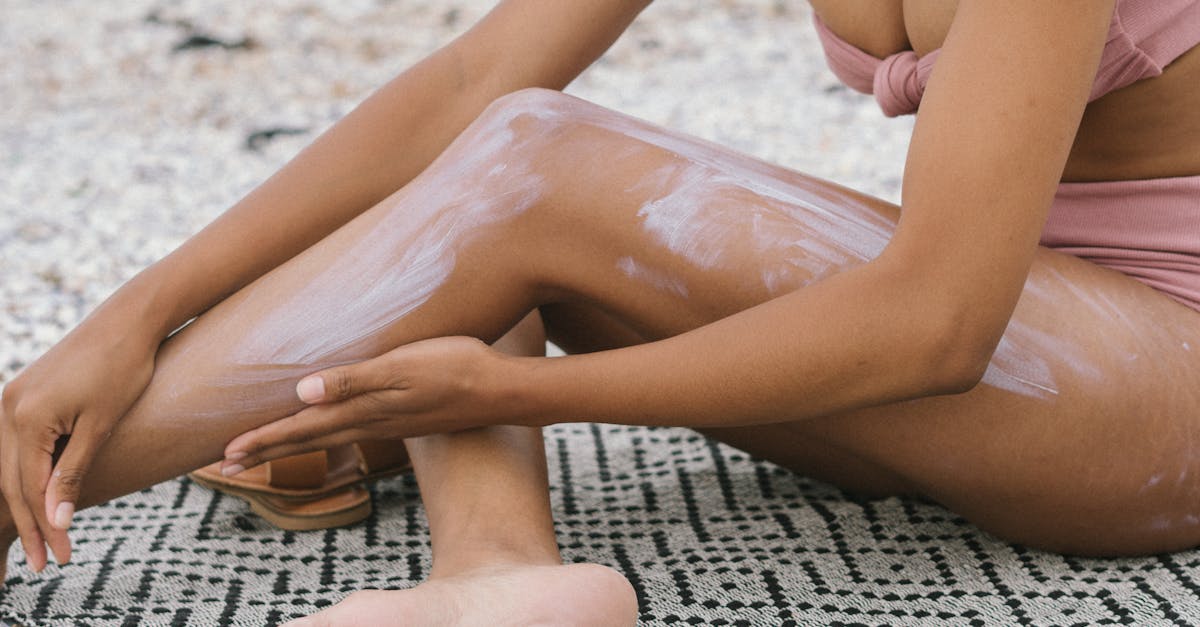Ultimate Sunscreen Guide for Sun Protection
What is Sunscreen and Why is it Important?
Sunscreen protects your skin from the sun's harmful ultraviolet (UV) rays. It works by absorbing, reflecting, or scattering UV rays, preventing them from penetrating your skin. Sunscreen is important because UV rays can cause sunburn, premature aging, and skin cancer.
There are two main types of UV rays: UVA and UVB. UVA rays penetrate deep into the skin, causing premature aging and wrinkles. UVB rays are the primary cause of sunburn and also contribute to skin cancer. Sunscreen helps protect against both types.
Use sunscreen daily, even on cloudy days, as UV rays can still penetrate clouds. Reapply every two hours, or after swimming or sweating heavily.
Types of Sunscreen
The two main types of sunscreen are physical and chemical. Physical sunscreens, also known as mineral sunscreens, sit on top of the skin and reflect UV rays. They typically contain zinc oxide or titanium dioxide. Chemical sunscreens absorb UV rays and convert them into heat.
Physical sunscreens are preferred for sensitive skin as they cause less irritation and offer immediate protection. However, they can be thicker and harder to spread. Chemical sunscreens are easier to apply and feel lighter, but they can take up to 20 minutes to become effective and may irritate sensitive skin.
SPF: What Does it Mean?
SPF stands for Sun Protection Factor and measures how well a sunscreen protects against UVB rays. Higher SPF means more protection. For example, SPF 30 blocks about 97% of UVB rays, while SPF 50 blocks about 98%.
No sunscreen can block 100% of UV rays. The benefits of SPF max out around SPF 50. Choose a broad-spectrum sunscreen that protects against both UVA and UVB rays, and apply it correctly.
How to Choose the Right Sunscreen
Consider these factors when choosing a sunscreen:
- Broad-spectrum protection: Protects against UVA and UVB rays.
- SPF of at least 30
- Water resistance, if swimming or sweating
- Suitable for your skin type
For outdoor activities, choose a higher SPF or water-resistant formula. For daily wear under makeup, opt for a lightweight, non-greasy formula.
How to Apply Sunscreen
Applying sunscreen correctly is crucial:
- Apply 15-30 minutes before sun exposure.
- Use enough to cover all exposed skin. About one ounce (a shot glass) for your entire body.
- Apply to often-missed spots like ears, neck, and tops of feet.
- Reapply every two hours, or immediately after swimming or sweating.
Sunscreen for Sensitive Skin
For sensitive skin, find sunscreens with ingredients like zinc oxide or titanium dioxide. These are less likely to cause irritation. Avoid products with fragrances or potential irritants.
Good options include Sun Bum Baby Bum SPF 50 Sunscreen Lotion and Pipette Mineral Sunscreen SPF 50.
Sunscreen for Different Activities
Sunscreen for Sports and Outdoor Activities
For sports, choose water-resistant sunscreens with high SPF, like Coppertone SPORT Sunscreen SPF 50. Stick sunscreens, like Thinkbaby SPF 30 Sunscreen Stick, are easy to apply and won't run into your eyes.
Sunscreen for Daily Wear
For daily wear, choose a lightweight, non-greasy product. Many moisturizers and foundations come with SPF built-in, like Jack Black Double-Duty Face Moisturizer SPF 20.
Sunscreen Myths and Misconceptions
Here are common sunscreen myths:
- Myth: You only need sunscreen on sunny days.
- Reality: UV rays penetrate clouds, so use sunscreen even on cloudy days.
- Myth: Higher SPF means better protection.
- Reality: SPF benefits max out around SPF 50. Higher SPF offers marginally better protection.
- Myth: Sunscreen is only needed at the beach.
- Reality: Wear sunscreen whenever you're outdoors.
- Myth: Darker skin tones don't need sunscreen.
- Reality: Everyone benefits from sunscreen to prevent skin damage and reduce cancer risk.
FAQs
How often should I reapply sunscreen?
Reapply every two hours, or after swimming or sweating.
Can I use last year's sunscreen?
Check the expiration date. Expired sunscreen may not offer adequate protection.
Do I need sunscreen if I have darker skin?
Yes, everyone benefits from sunscreen.
Can I use a moisturizer with SPF?
Yes, if it offers broad-spectrum protection and an SPF of at least 30.
What should I look for in a lip sunscreen?
Choose one with SPF 30 and moisturizing ingredients, like Banana Boat Sport Ultra SPF 50 Lip Sunscreen.
How can I tell if my sunscreen is expired?
Check the expiration date. If none, replace sunscreen older than three years.
Conclusion
Sunscreen is essential for protecting your skin from harmful UV rays. Choose the right one for your skin type and activity, and apply it correctly. Select a broad-spectrum sunscreen with SPF 30 or higher and reapply every two hours or after swimming or sweating. Don't forget often-missed areas like ears, neck, and tops of feet.
With many great options available like Australian Gold Spray Gel Sunscreen SPF 30, make sunscreen a daily habit. Your skin will thank you!
'%3e%3c/use%3e%3c/g%3e%3cg%3e%3cuse%20xlink:href='%23a9fehgwfM'%20opacity='1'%20fill='url(%23gradientk1wNV9Ostb)'%3e%3c/use%3e%3c/g%3e%3c/g%3e%3c/svg%3e)

